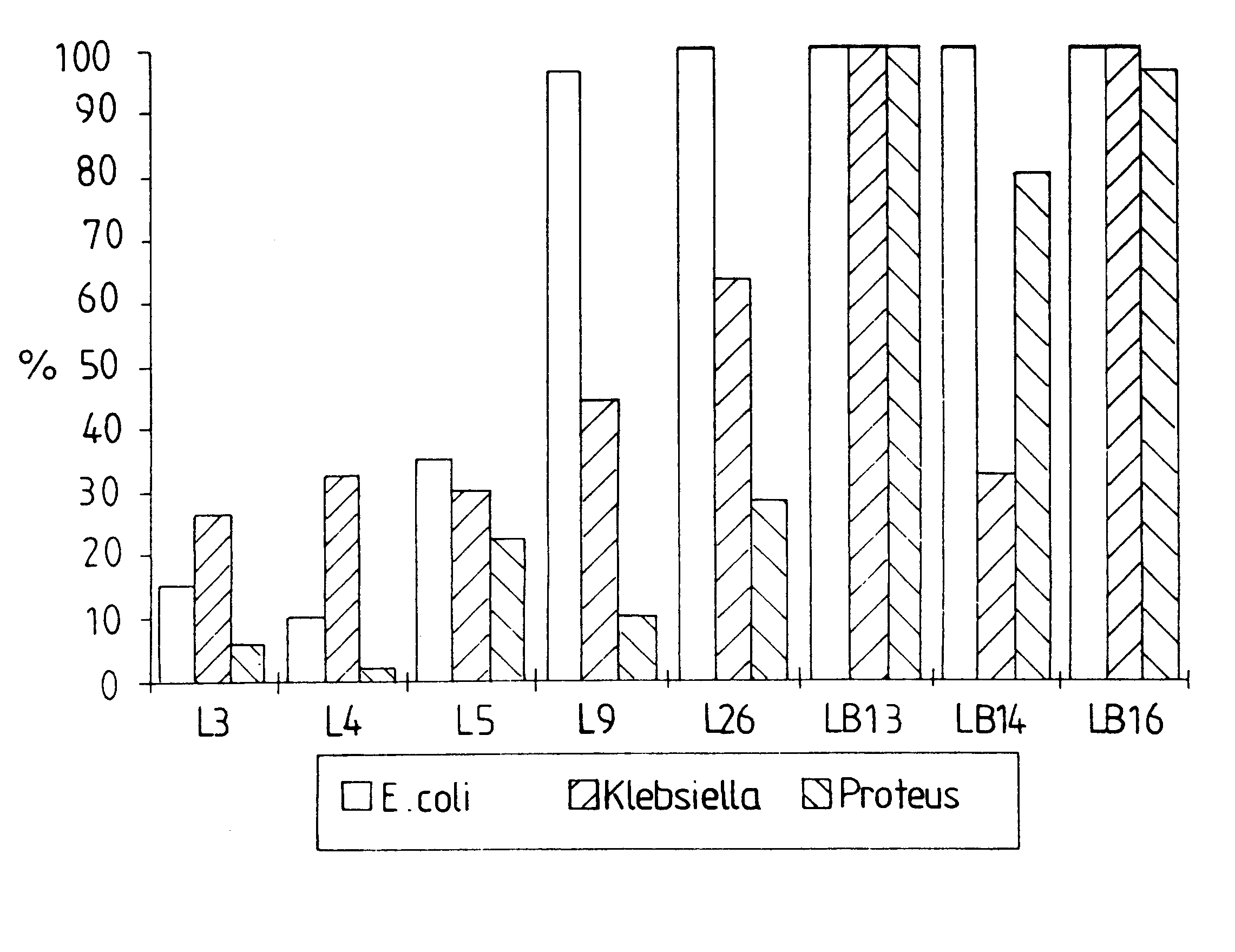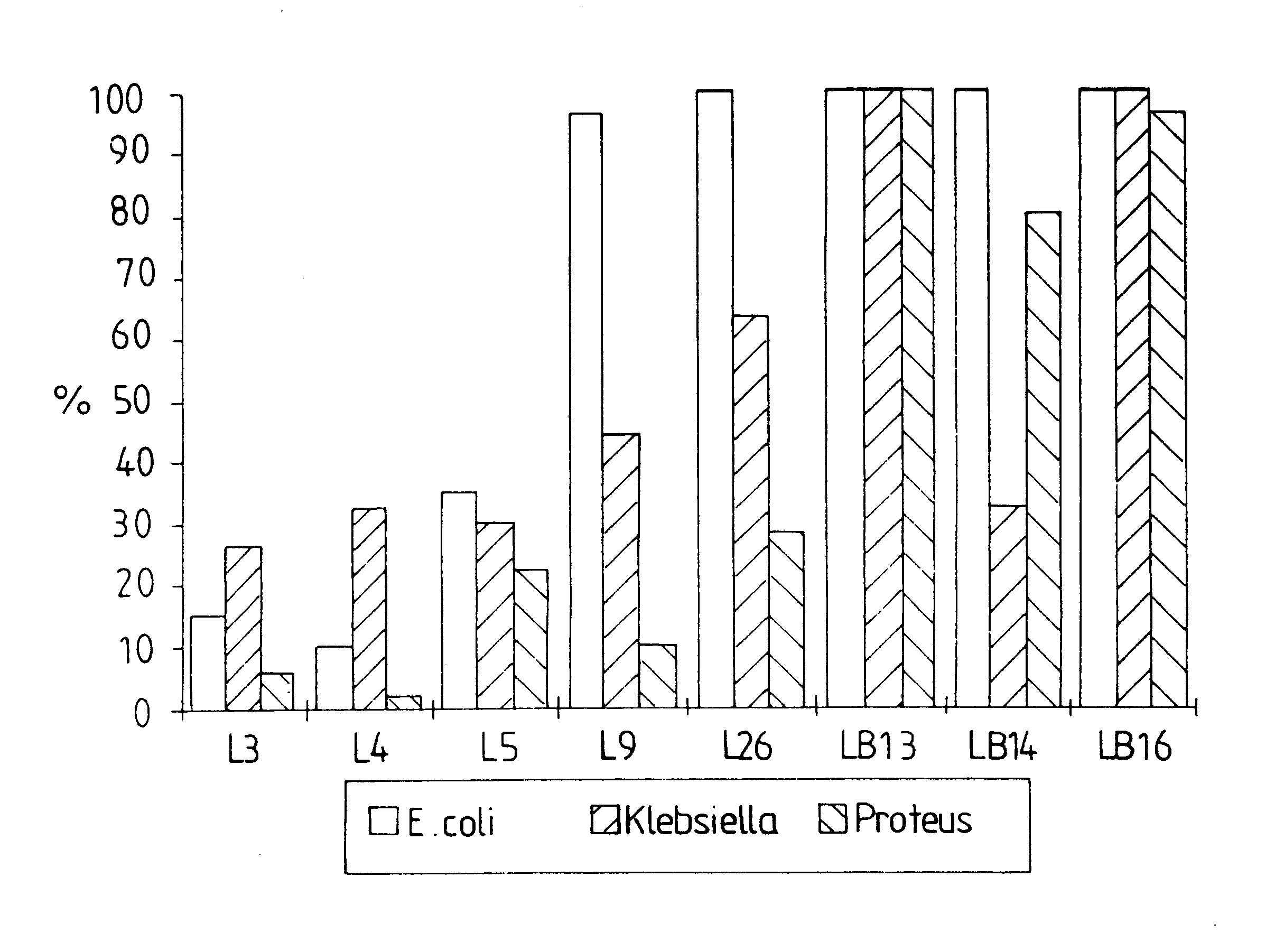Inhibiting the growth of bacteria in absorbent articles by adding other bacteria
a technology of absorbent articles and bacteria, applied in the direction of microorganisms, sanitary towels, bandages, etc., can solve the problems of negative ecological consequences, risk of resistance strains, etc., and achieve the effects of promoting undesirable odors, and reducing the risk of infection
- Summary
- Abstract
- Description
- Claims
- Application Information
AI Technical Summary
Benefits of technology
Problems solved by technology
Method used
Image
Examples
example 2
Tests were carried out in accordance with the "agar overlay" method with the intention of studying bacterial antagonism. The method is based on the growth-inhibiting substance produced by the lactobacteria diffusing through an agar layer and inhibiting the growth of the test organisms.
Lactic acid bacteria, five strains of Lactobacillus and three strains of Lactococcus, were cultivated to an overnight culture in a suitable broth. Lactococcus were cultivated in M17 and Lactobacillus were cultivated in MRS. Agar (2%) of M17 and MRS (25 ml) respectively were mixed with 1.0 ml of respective bacteria and moulded in a petri dish. The Agar plates were incubated overnight at 37.degree. C. The plates that contained MRS were incubated in a CO.sub.2 atmosphere. Reference plates were prepared in a corresponding manner, but without lactic acid bacteria. A further layer containing 25 ml agar was moulded on top of the layer present in the petri dishes and allowed to solidify.
The test organisms, in ...
example 3
Five test products were produced, each consisting of a pulp body that comprised a fibre mixture of 50% chemithermomechanical cellulose pulp and 50% chemical cellulose pulp with an addition of about 5% superabsorbent material. The pulp body was sandwiched between a permeable nonwoven material having a surface weight of 23 g / m.sup.2 and an impervious backing sheet comprised of 33 .mu.m polyethylene film. A layer of polyester wadding having a surface weight of 65 g / m.sup.2 was placed between the nonwoven sheet and the pulp body. A mixture of freeze-dried lactobacteria of genus Lactobacillus was placed between the wadding and the pulp body in an amount corresponding to 10.sup.8 bacteria per test product. 50 ml of synthetic urine according to Example 1 were then applied to the pulp body. The presence of lactobacteria in the groins and at the mouth of the urethra of five test subjects was measured, whereafter the subjects wore respective test products for two hours in the manner of a diap...
PUM
| Property | Measurement | Unit |
|---|---|---|
| weight | aaaaa | aaaaa |
| pH | aaaaa | aaaaa |
| bioactive | aaaaa | aaaaa |
Abstract
Description
Claims
Application Information
 Login to View More
Login to View More - R&D
- Intellectual Property
- Life Sciences
- Materials
- Tech Scout
- Unparalleled Data Quality
- Higher Quality Content
- 60% Fewer Hallucinations
Browse by: Latest US Patents, China's latest patents, Technical Efficacy Thesaurus, Application Domain, Technology Topic, Popular Technical Reports.
© 2025 PatSnap. All rights reserved.Legal|Privacy policy|Modern Slavery Act Transparency Statement|Sitemap|About US| Contact US: help@patsnap.com


